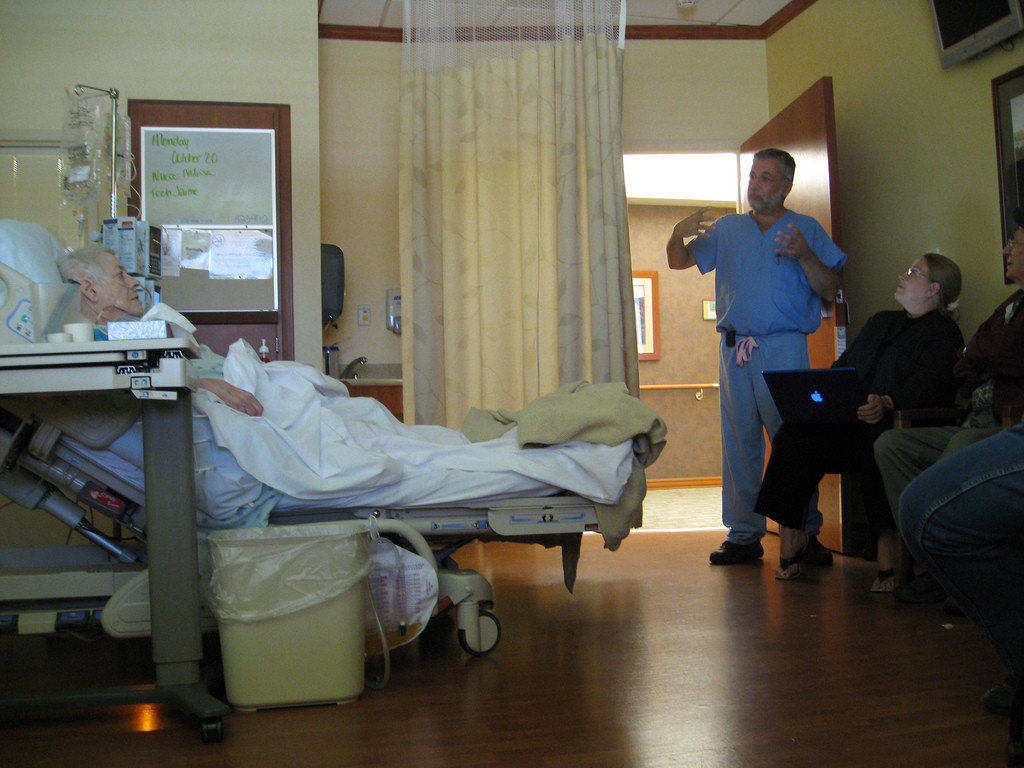We tend to make errors and it is natural. Nobody is perfect. However, in the medical field, small errors can create a chain effect that may result in someone’s death. Not believing that? Here are the stats that say more than 100,000 Americans die per year in the U.S. due to medical errors.
The sad thing is that most of these deaths could have been prevented if there had been no medical negligence. Medical care is all about improving your or your loved ones’ health both physically and mentally. What if you or someone you know faces this cruel situation? (I hope nobody lives through that horror.)
You might have a lot of questions like how this happened and what can be done to bring justice to the situation. Well, the answer is legal action. With an experienced medical malpractice lawyer, you are sure to get the deserved justice for you or your loved ones. Yes, it won’t bring them back, but you will be relieved that nobody will have to face that kind of situation again.
So, how can you prove medical malpractice? Well, let us take a closer look, shall we?
The Three Pillars of Medical Malpractice
Medical malpractice is determined by three essential factors: a breach of the standard of care, injury resulting from negligence, and substantial damages. Now, let’s delve into each of these important aspects:
Standard of Care Violation
The “standard of care” is all about the right way doctors should treat patients in certain situations. It’s based on what most doctors usually do. When a doctor doesn’t do what they’re supposed to, that’s called negligence.
For example, if a patient has bad headaches, and it’s common practice to do a CT scan, but the doctor doesn’t order one, that’s not following the standard of care. Or, if a surgeon operates on the wrong body part because they didn’t double-check, that’s also not following the standard of care.
Injury Due to Negligence
For a doctor’s actions to be considered malpractice, their mistake must directly lead to serious injury or harm. Here are some examples of injuries caused by medical negligence:
- Misdiagnosis that makes an illness worse or leads to the wrong treatments.
- Surgical errors that result in permanent disability.
- Anesthesia mistakes cause brain damage.
- Medication errors that lead to organ failure or complications.
- Infections that could have been prevented in the hospital
- Delays in diagnosing cancer, allowing it to progress.
A real-life case illustrates the seriousness of medical negligence: a surgeon operated on the wrong vertebrae, causing the patient to become paralyzed from the waist down. Such devastating outcomes underscore the potential harm from medical mistakes.
Significant Damages
To prove medical malpractice, the patient must suffer substantial losses such as increased medical expenses, lost income, disability, pain, and a lower quality of life.
For example, when a tumor diagnosis is delayed due to a misread MRI, it can result in additional costs for more invasive treatments, a loss of income from being unable to work, and a shorter life expectancy. These consequences affect a person’s finances, physical well-being, and emotional state.
The Legal Framework Surrounding Medical Malpractice
Medical malpractice operates within the framework of tort law, which deals with negligence. Two important legal concepts come into play in this context:
Tort of Negligence
Medical malpractice is rooted in negligence tort. It involves four key elements: duty, breach, causation, and damages, which form the legal foundation for malpractice cases.
In these cases, plaintiffs must demonstrate that the doctor had a duty to provide care, but this duty was violated, leading to harm. Importantly, intent is not necessary; only carelessness or negligence needs to be proven.
Informed Consent
Patients are required to give informed consent before undergoing treatment, which means the doctor must fully disclose the risks involved. If a doctor fails to properly explain treatment risks or other available options, it can be considered a breach of informed consent and may qualify as malpractice.
Important legal cases like Canterbury v. Spence have set the precedent that doctors must disclose all significant risks that a reasonable patient would want to be aware of before giving their consent.
Who Can Be Held Liable?
In a medical malpractice lawsuit, various individuals or entities can be named as defendants, depending on their involvement in the negligent care.
Physicians
Doctors, surgeons, psychiatrists, and dentists have a direct treatment relationship with the patient, which means they have a duty to provide standard care. When these healthcare professionals breach their duty and such breaches lead to patient injury, it often results in malpractice lawsuits.
Nurses and Other Medical Staff
While physicians are the primary defendants in malpractice suits, it’s important to note that nurses, medical assistants, technicians, and other healthcare staff also have a duty of care towards patients and can be held liable for negligence. For instance, if a nurse fails to promptly inform the doctor about a patient’s deteriorating condition, it may be considered malpractice.
Hospitals
Hospitals are obligated to maintain safe facilities and establish appropriate policies for screening and supervising their staff. Lawsuits filed against hospitals often involve allegations such as inadequate staffing, unsafe premises resulting in patient falls, and the reuse of contaminated equipment, among other issues.

Health Insurance Providers
Insurance companies can be held liable for malpractice when they deny or delay pre-authorized treatments, which subsequently harm the patient. Pre-authorization serves as a medical recommendation that patients depend on, and insurers can be held responsible if their actions result in harm to the patient.
Administrative Staff
While uncommon, clerical staff members such as patient coordinators can be held accountable if their negligence, such as charting errors, misplacing lab orders, or making billing mistakes, results in harm to a patient.
Acts or Omissions That Constitute Malpractice
Various types of preventable medical errors can form the basis for a malpractice claim. Some common examples include
- Misdiagnosis
- Delayed treatment
- Surgical mistakes
- Medication errors
- Anesthesia errors
- Infection acquired in a healthcare facility
- Birth injuries
- Failure to obtain informed consent
- Inadequate follow-up care
- Equipment or device malfunctions
- Negligent supervision of healthcare staff
Failure to Diagnose
One of the primary allegations in malpractice suits is the failure to diagnose serious illnesses like cancer or appendicitis. Even capable doctors can sometimes overlook crucial symptoms or misinterpret test results. This can result in delayed treatment and a more unfavorable prognosis for the patient.
Surgical Errors
Performing surgery on the wrong body part or using incorrect techniques can cause significant harm to patients. Unfortunately, incidents of surgical instruments being left inside patients occur more frequently than they should, posing serious risks to patient safety.
Anesthesia Mistakes
Administering an incorrect dose of anesthesia or inadequate patient monitoring can result in severe consequences, including brain damage, organ failure, paralysis, cardiac arrest, and, in the worst cases, death.
Birth Injuries
Errors during labor and delivery, such as failing to perform a necessary C-section, using improper forceps, or not recognizing fetal distress, can result in permanent harm to the baby. This may include oxygen deprivation, cerebral palsy, and paralysis, among other serious and life-altering conditions.

Medication Errors
Mistakes made by doctors and nurses when prescribing or administering the wrong medication, incorrect dosage, or giving it to the wrong patient happen all too often. These errors can lead to allergic reactions, organ damage, toxicity, and potentially dangerous drug interactions, posing significant risks to patient safety.
The Litigation Process
Patients who want to file a malpractice lawsuit must go through the civil litigation process, which involves several steps and procedures.
Filing and Service of a Summons
The plaintiff initiates the litigation process by preparing and submitting a summons and complaint document to the court against the healthcare provider defendant. Afterward, the court ensures that the defendant receives an official copy of this summons.
Discovery Process
In the discovery phase, both parties exchange pertinent information and documents, conduct depositions (interviews under oath), and gather evidence. Medical records and expert testimony play crucial roles as evidence during this phase of the lawsuit.
Consequences for Patients and Doctors
The litigation process can be financially and emotionally draining for both plaintiffs and doctor defendants. While many cases are resolved through settlements, doctors who are found liable at trial can face significant consequences, including paying damages to the plaintiff and potential increases in their malpractice insurance premiums.
Frequently Asked Questions
1. Can I sue for medical malpractice without a physical injury?
In most states, plaintiffs need to show they suffered physical harm or injury caused by medical negligence. Emotional distress alone is unlikely to meet the damages requirement.
2. How long does a medical malpractice lawsuit typically take?
Most medical malpractice suits resolve in 1-3 years. However, cases involving extensive injuries requiring long-term care can exceed 5 years until settlement. Only a small fraction go to trial, which averages over 5 years.
3. What is the average compensation for medical malpractice?
It varies widely based on factors like state, injury severity, and expenses. The average payout nationally is around $195,000, but permanent major damages can exceed $1 million. Death cases have the highest settlements, averaging $1.25 million.
Key Takeaways
Suffering due to a healthcare professional’s negligence can have a profound impact on patients and their families, not to mention the financial burden of additional medical expenses to treat preventable injuries.
All too often, malpractice can alter lives in irreversible ways. If you suspect that substandard medical care has caused significant harm to you or a loved one, it’s crucial not to delay exploring your legal options.
An experienced medical malpractice attorney can evaluate the merits of your unique case. Through careful case preparation and persistence, justice may be served, and the compensation obtained can help cover ongoing care needs.
Moreover, holding healthcare providers accountable promotes enhanced safety practices and contributes to preventing similar harm to future patients. Although the journey may be challenging, your actions can make a meaningful difference.
Stay resilient and advocate for yourself to secure a fair resolution.
